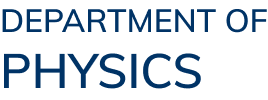Abstract
The dissertation bridges advanced electron microscopy with materials science to reveal structure-property relationships across biological, catalytic, and moiré systems. Beginning with the working principles of transmission electron microscopy (TEM), the research demonstrates its essential role in studying three key areas: biomineral structures in deep-sea snails, metal cluster catalysts, and 2D materials. Different sample preparation methods for TEM and SEM are covered in the experimental section. The aberration-corrected STEM, catalytic performance assessment and complementary characterization method are also discussed for comprehensive study.
Chapter 3 uses TEM, SEM, and chemical analysis to investigate iron sulfide formation in hydrothermal vent snails (G. aegis and C. squamiferum). The study reveals how organic matrices stabilize atomically dispersed iron and iron sulfide clusters across hydrothermal vent fields. High hydrostatic pressure reduces nucleation barriers, while pyrrolic nitrogen coordination facilitates cluster formation, with environmental iron concentrations guiding material growth from disordered clusters to ordered crystals, illustrating how extreme conditions and biological control jointly shape mineral formation.
Chapter 4 establishes a universal design principle for multi-step hydrogenation catalysis using few-atom metal clusters (Pt4, Ru3) supported on nanodiamond/graphene hybrids. These systems exhibit exceptional activity and stability, outperforming single-atom and nanoparticle counterparts. Mechanistic studies reveal that cluster geometries optimize H2 activation and intermediate binding, preventing active site blocking, a breakthrough for cascade reaction engineering.
Chapter 5 develops two practical methods to control quantum effects in ultrathin materials via symmetry control. The first uses stacked MoS2/WSe2 layers with twist-controlled patterns to manipulate electron behavior. The second employs naturally uneven ReS2 layers to create stable quantum states regardless of stacking angles. These approaches redefine "symmetry-by-design" strategies, enabling tailored Berry curvature redistribution and anisotropic quantum responses.
In summary, by connecting atomic-scale details to material performance, this work creates unified design rules for biological materials, efficient catalysts, and quantum technologies, offering scalable frameworks for applications ranging from environmental science to quantum technologies.
